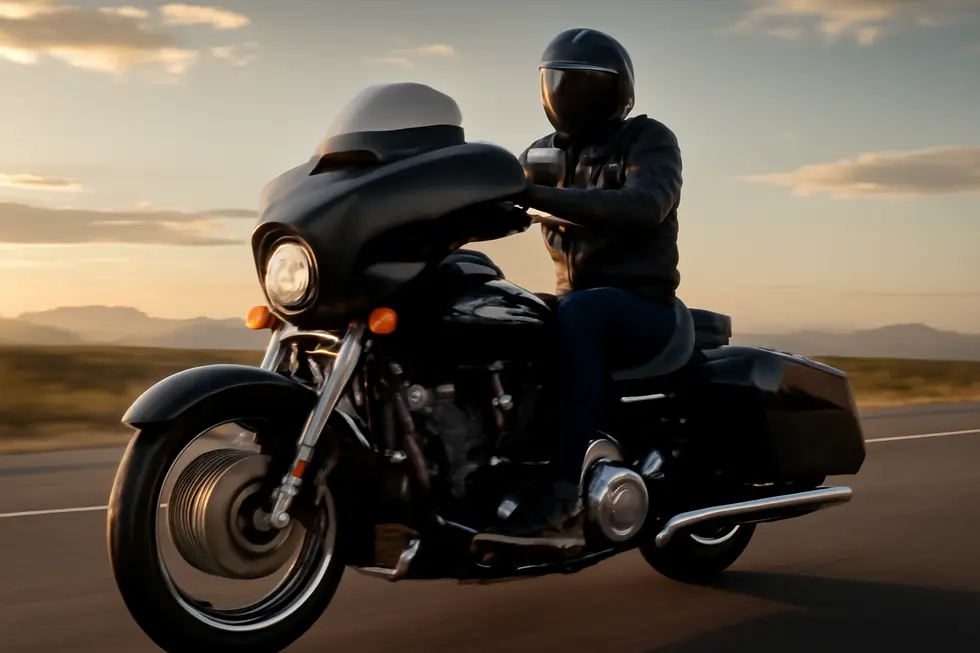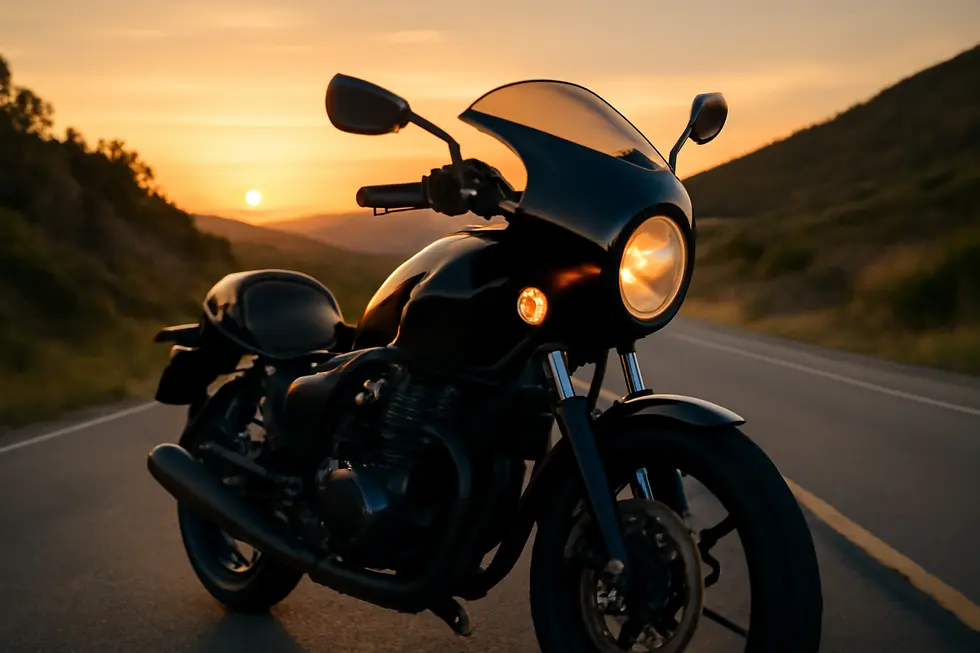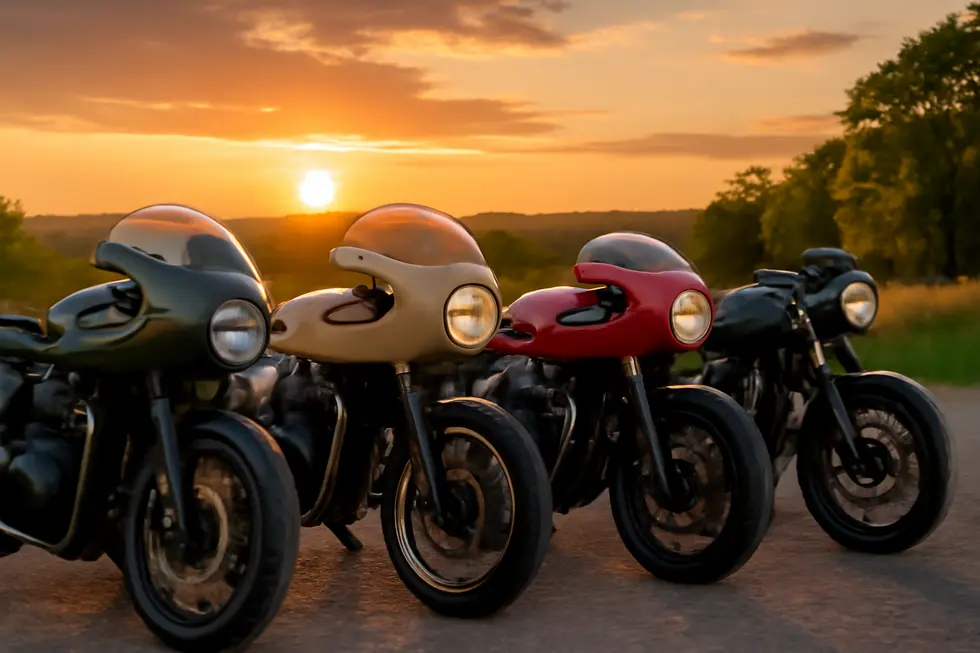HD Motorcycle Fairings: The Ultimate Guide for Business Owners
August 23, 2025 | by summitfairings
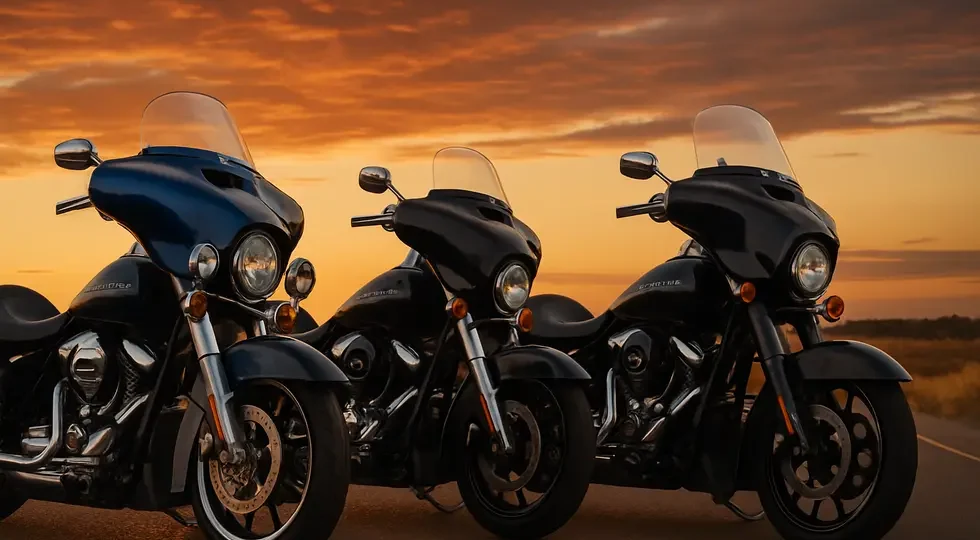
Introduction
HD motorcycle fairings play a pivotal role in enhancing the rider experience by improving aerodynamics, comfort, and aesthetic appeal. For business owners within the motorcycling industry—whether dealers, aftermarket vendors, or custom shops—understanding the intricate balance of materials technology, installation processes, and styling options is crucial to delivering value to customers and steering ahead of the competition. This article unpacks the technological innovations behind HD fairings, practical considerations for installing and customizing them on Harley models, and the impactful styling and functional enhancements that set products apart in the marketplace. Together, these insights provide a comprehensive framework to optimize fairing products both for performance and commercial success.
Tables of Contents
Chapter 1: Technological Aspects of HD Motorcycle Fairings: Materials and Aerodynamics
- Innovative Materials Shaping the Performance and Durability of HD Motorcycle Fairings
- Streamlining Performance: Aerodynamic Design and Material Synergy in HD Motorcycle Fairings
- Revolutionizing HD Motorcycle Fairings with Carbon Fiber Composites: Balancing Lightweight Strength and Aerodynamic Precision
- Innovative Testing and Simulation Techniques Elevating HD Motorcycle Fairings’ Material Performance and Aerodynamic Design
- Balancing Cost, Performance, and Sustainability: Material Choices Shaping HD Motorcycle Fairings
Chapter 2: Installation and Customization of HD Motorcycle Fairings for Harley Models
- Mastering the Installation and Personalization of Fairings on Harley Street Glide Bikes
- Mastering Installation Techniques and Customization Tools for Harley Street Bob Fairings
- Essential Techniques for Removing and Reinstalling Fairings on Harley Road Glide Motorcycles
- Enhancing Harley Davidson Iron Models: Seamless Installation and Tailored Fairing Customization
- Precision and Performance: Essential Torque Guidelines and Installation Techniques for HD Motorcycle Fairings
Chapter 3: Styling and Functional Enhancements with HD Motorcycle Fairings and Accessories
- Elevating Rider Comfort and Aerodynamics: Functional Styling Innovations in HD Motorcycle Fairings
- Elevating Harley Appeal: Seamless Customization and Practical Enhancements with HD Fairings and Accessories
- Seamless Lighting Innovations Elevating HD Motorcycle Fairings for Style and Safety
- Seamless Audio Integration: Elevating Style and Rider Experience with HD Motorcycle Fairings
- Cutting-Edge Aftermarket Innovations Shaping the Future of HD Motorcycle Fairings
Chapter 1: Technological Aspects of HD Motorcycle Fairings: Materials and Aerodynamics
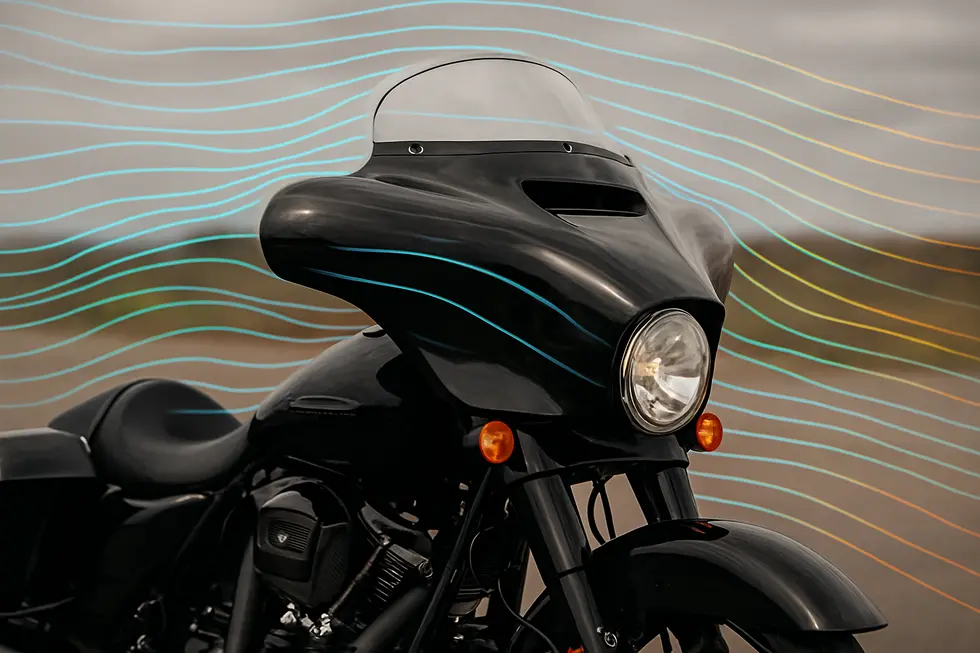
1. Innovative Materials Shaping the Performance and Durability of HD Motorcycle Fairings
Harley-Davidson motorcycle fairings blend cutting-edge material innovation with functional design to elevate rider experience and durability. Among the primary materials, ABS plastic stands out for its lightweight nature—about 20% lighter than metal—and resilience. It features UV coatings that protect against harsh weather fluctuations from -30°C to 80°C, ensuring longevity without corrosion. This makes it ideal for modular fairing kits with adjustable mounts that fit a variety of Harley models, offering riders flexibility combined with robust performance. Fiberglass is another core material, prized for its toughness and impact resistance. Paired often with acrylic windshields, fiberglass creates a clean, sporty appearance while allowing seamless custom paint applications without extra surface treatment. This combination balances endurance with aesthetic versatility, enhancing both protection and style. For premium and race-focused fairings, carbon fiber brings a high-tech edge, dramatically cutting weight while maintaining structural strength. Its distinctive weave patterns add a visual depth that appeals to performance enthusiasts. This material significantly improves handling through reduced mass and contributes to an aerodynamic advantage.
The technological evolution also sees hybrid approaches that fuse carbon fiber fronts with ABS rear panels, striking a balance between performance gains and cost efficiency. Overall, precise material selection directly supports the aerodynamic effectiveness and overall quality of Harley fairings. Optimized materials not only improve speed stability and rider comfort but also offer customizable options that reflect individual style. Riders benefit from durable, weather-resistant, and lightweight fairings that elevate their motorcycles’ capabilities and aesthetics in equal measure.
For a comprehensive look at the range of practical and stylish fairing options available, explore the customized motorcycle fairings at Summit Fairings.
[1] Use of carbon fiber for premium race-oriented fairings enhancing lightweight performance.
2. Streamlining Performance: Aerodynamic Design and Material Synergy in HD Motorcycle Fairings
The aerodynamic design of HD motorcycle fairings is a precise balance of form and function, aiming to optimize airflow around the bike while enhancing rider protection and control. These fairings are meticulously shaped to minimize drag and turbulence, creating smooth air currents that reduce wind resistance and improve high-speed stability. Through subtle curves and precisely engineered contours, fairings channel airflow efficiently, lessening buffeting and rider fatigue. An essential aerodynamic feature is the generation of downforce, which presses the motorcycle onto the road surface, enhancing traction and handling during acceleration and cornering.
Materials play a crucial role in realizing these aerodynamic objectives. High-performance composites and specialized plastics are often selected for their excellent strength-to-weight ratios, ensuring that the fairing resists deformation under aerodynamic loads without adding unnecessary mass. The lightweight nature of these materials contributes to overall agility and fuel efficiency, while heat resistance protects against engine-generated thermal stress and environmental factors. These attributes allow designers to incorporate intricate shapes and functional elements—such as integrated vents and strategically positioned intake ducts—that further optimize cooling and airflow.
Moreover, aerodynamic considerations extend to accessories like mudguards and headlight trims, which complement the fairing’s profile and reduce drag. The synergy between aerodynamic shaping and material choice enables fairings not only to sharpen the motorcycle’s visual identity but also to improve rider comfort by mitigating wind pressure and turbulence. For riders seeking to tailor both performance and aesthetics, understanding this interplay unlocks more informed decisions about fairing selection and customization.
For riders interested in exploring diverse options and styles that combine aerodynamic efficiency with quality materials, the best motorcycle fairings at Summit Fairings offer a vast collection tailored to these needs. For further examples of aerodynamic innovation and material integration, see the detailed review of the Ducati Panigale V4’s advanced design.
3. Revolutionizing HD Motorcycle Fairings with Carbon Fiber Composites: Balancing Lightweight Strength and Aerodynamic Precision
Advanced composite materials, particularly carbon fiber, have transformed the development of Harley-Davidson motorcycle fairings, offering a remarkable blend of strength, durability, and weight reduction. These materials are prized for their exceptional strength-to-weight ratio, enabling fairings to be around 30% lighter than conventional fiberglass counterparts. This weight reduction directly translates to enhanced speed and improved fuel efficiency by minimizing aerodynamic drag, making carbon fiber a preferred choice for riders seeking performance gains without compromising durability.
Carbon fiber composites not only resist corrosion but also endure extreme conditions, maintaining structural integrity at temperatures soaring up to 250°C. This attribute is essential for fairings positioned near heat sources such as engines, ensuring long-term resilience and shape retention despite rigorous environmental stresses. The reduced mass positively affects motorcycle handling, offering increased agility and stability, which benefits both everyday riders and those pushing limits on the track.
The aerodynamic advantages are equally compelling. Carbon fiber allows designers to craft smooth, contoured fairings that decrease drag by approximately 20% compared to traditional models, elevating both stability and control at high speeds. This precision in shaping also supports improved downforce generation, optimizing tire contact and enhancing traction during aggressive maneuvers. Beyond performance, the customizable nature of carbon fiber composites introduces fresh styling possibilities, with varied color options and finishes that appeal to riders wanting a tailored, modern look.
Looking ahead, the integration of carbon fiber technology in motorcycle fairings mirrors innovations seen in aerospace applications, where reusability and weight efficiency are vital. Such cross-industry advancements suggest a promising future for HD fairings—melding cutting-edge materials science with aerodynamic refinement to push the boundaries of rider experience.
For riders interested in exploring a broad range of fairing options crafted with such advanced materials, Summit Fairings offers insights and choices tailored to varied preferences and performance needs.
More on aerospace-grade carbon fiber innovations influencing future designs can be found at the ACMA article on carbon fiber composite launch vehicles.
4. Innovative Testing and Simulation Techniques Elevating HD Motorcycle Fairings’ Material Performance and Aerodynamic Design
The development of HD motorcycle fairings demands rigorous testing and advanced simulation to refine both material durability and aerodynamic efficiency. Materials chosen for fairings—like fiberglass, carbon fiber, and ABS plastics—are subjected to extensive tests that measure strength, flexibility, and environmental resistance. These evaluations ensure the panels can endure wind stresses, impacts, and weathering while remaining lightweight. Modern finite element analysis (FEA) models simulate the structural behavior of these materials under realistic conditions, allowing engineers to predict potential weak points without physical prototypes.
Complementing materials testing, aerodynamic simulation tools such as computational fluid dynamics (CFD) play a crucial role in optimizing fairing shapes. By virtually modeling airflow around a motorcycle, designers can identify drag-inducing elements and turbulent wake regions that compromise rider comfort and fuel efficiency. Adjustments to contour lines, vent placements, and fairing angles stem from these simulations to balance wind protection and stability at high speeds.
Wind tunnel experiments serve as an indispensable validation method, translating virtual findings into real-world airflow data. Testing various fairing designs under controlled conditions reveals true performance impacts on drag reduction and rider wind buffeting. Such experiments also inform fine tuning, like aligning headlights and vents, to enhance aerodynamic benefits without undermining maneuverability.
Together, these sophisticated testing and simulation techniques empower manufacturers to create HD fairings that optimize material resilience and aerodynamic performance. This integration of virtual and physical evaluation ensures that fairings deliver improved stability, rider comfort, and longevity. For those seeking deeper insights into fairing developments and customization options, the Summit Fairings blog provides an excellent resource on affordable motorcycle fairings with innovative designs. Additionally, computational fluid dynamics principles for motorcycles are detailed in scientific resources such as the overview offered by ScienceDirect.
5. Balancing Cost, Performance, and Sustainability: Material Choices Shaping HD Motorcycle Fairings
Material selection in HD motorcycle fairings plays a crucial role in defining both economic viability and environmental impact. Increasingly, manufacturers and custom builders are turning to recycled and bio-based materials to reduce dependency on virgin resources. These alternatives, such as recycled resins and sustainable polymers, echo circular economy principles by repurposing waste from automotive industries. This shift not only lowers production costs related to raw materials but mitigates environmental harm by cutting CO₂ emissions and decreasing landfill waste. However, integrating these materials requires design and processing optimizations that maintain the durability and aerodynamic precision essential to performance.
Aerodynamics and material weight are closely interlinked aspects influencing a motorcycle’s fuel efficiency and emissions. Lightweight components allow engineers to craft fairings that reduce drag without sacrificing structural integrity. This synergy enhances fuel economy, directly lowering greenhouse gases emitted during operation. Though specific data on Harley-Davidson fairings is limited, parallels from automotive design demonstrate how aluminum and aerodynamic features collectively improve environmental outcomes.
Environmental benefits extend beyond weight reduction. Motorcycles inherently consume less fuel than many vehicles, but they face challenges in emission controls, especially concerning nitrogen oxides and hydrocarbons. Fairings constructed from eco-conscious materials help offset these shortcomings by improving airflow and engine efficiency, pairing with options like reusable air filters to minimize waste and enhance longevity.
Economically, the upfront investment in advanced sustainable materials and aerodynamic designs is balanced by long-term savings through reduced fuel consumption and less frequent part replacements. Riders gain both in operational cost and in committing to greener practices.
For riders and builders interested in exploring sustainable and aerodynamic fairing options that align style with function, discover unmatched choices in motorcycle fairings offers a comprehensive resource. This evolving focus on materials signals a future for HD motorcycle fairings where economic and environmental priorities advance hand in hand, supporting durable, efficient, and responsible riding.
External Resource: Honda’s initiatives on recycled motorcycle materials demonstrate practical applications reducing CO₂ emissions and raw resource use (https://www.honda.com/environmental).
Chapter 2: Installation and Customization of HD Motorcycle Fairings for Harley Models
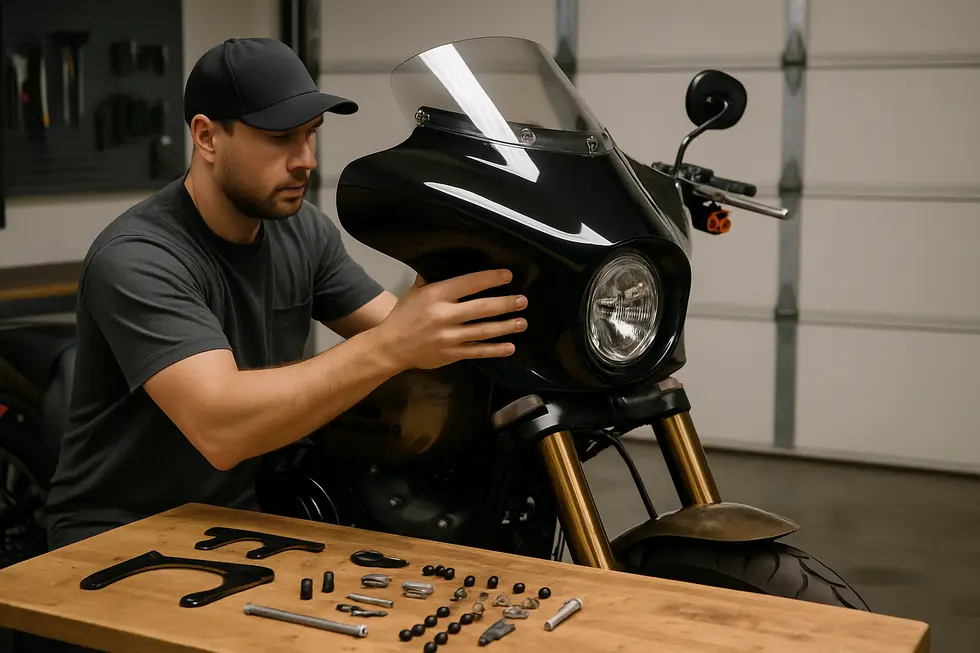
1. Mastering the Installation and Personalization of Fairings on Harley Street Glide Bikes
Upgrading your Harley Street Glide with new motorcycle fairings enhances both form and function, combining improved aerodynamics with personalized style. The process begins by carefully removing the existing fairing using Torx tools, typically sizes T25 and T27. It’s crucial to handle this step gently, loosening screws and wiggling the fairing free to prevent any damage to mounting points or wiring.
Once the old fairing is detached, preparing the new components sets the stage for a smooth installation. This includes affixing elements like the vent bezel with high-quality double-sided tape and positioning the headlight trim—securing the top before clipping the bottom ensures proper alignment and fit. Mounting the headlight assembly follows, where precise alignment with mounting holes is essential to avoid misfits, with screws started loosely before final tightening.
Reinstalling the headlight door or trim demands attention to torque specifications, usually between 22 and 32 inch-pounds, to secure it firmly without risking cracks or stripping screws. Next, mounting the outer fairing requires reconnecting headlight wiring first, then supporting the fairing with a central screw while aligning and inserting the remaining fasteners. Leaving all screws slightly loose at first allows for proper adjustment before tightening them evenly.
Customization opportunities abound once the structural installation is complete. Riders often add vent accents or antenna hole covers to tailor the look of their Street Glide. For enhanced versatility, optional fairing shrouds can be installed, offering additional styling and audio upgrade options; these shrouds can be trimmed or modified to suit rider preferences without altering the core mounting process.
A step-by-step visual guide can greatly assist in mastering this installation and customization, with expert tutorials providing practical tips to achieve a flawless, factory-quality finish. For more technical details on installation procedures, referencing reputable resources such as this detailed installation guide is highly recommended.
Discover more insights and styling ideas to enhance your Harley Street Glide by exploring expert advice and parts at Summit Fairings blog.
2. Mastering Installation Techniques and Customization Tools for Harley Street Bob Fairings
Installing and customizing fairings on Harley Street Bob motorcycles demands precision and knowledge of specific techniques tailored to this model’s design. Preparation starts with carefully attaching components like vent bezels and headlight trims, commonly using high-quality adhesives such as 3M double-sided tape to ensure durable placement without damage. Reinstalling the headlight assembly requires proper alignment with mounting holes, secured with T25 Torx screws tightened to recommended torque ranges to avoid stripping or misalignment. Once the electrical connections for the headlight are secured, the outer fairing can be mounted. This stage involves initially fitting and loosely securing supporting screws to maintain correct positioning before fully tightening, ensuring the fairing sits flush and avoids stress on mounting points.
For riders opting to add crash bars or other protective accessories, following manufacturer guidelines is crucial to preserve both aesthetic harmony and structural integrity with the fairing setup. Tools like T25 Torx screwdrivers, Phillips head screwdrivers, and a torque wrench are indispensable for a professional, damage-free install. Torque wrenches help maintain screw tension within 22–32 inch-pounds, preventing over-tightening that could crack fairing materials.
Customization options include comprehensive fairing kits engineered for Harley Dyna/FXR lines such as the Street Bob, often featuring lightweight, robust brackets, light pods, smoked lenses, and windscreens. These kits support easy upgrades, enhancing aerodynamics and rider comfort with sleek styling. Depending on front fork diameters, aftermarket mounting kits enable compatibility with various windshield types, including quarter fairings favored for versatility across Harley models.
Verification of part compatibility with the exact model year streamlines installation and reduces fitment issues. Trusted step-by-step manuals and video tutorials serve as valuable resources to maintain alignment and integrity throughout the assembly, starting from smaller trim components and progressing to major structural parts. This integrated approach ensures both function and aesthetics are optimized in Street Bob fairing upgrades.
For those seeking detailed visual guidance and kit options built specifically for Harley Street Bob models, exploring resources such as the blog at Summit Fairings and installation tutorials is highly recommended.
3. Essential Techniques for Removing and Reinstalling Fairings on Harley Road Glide Motorcycles
Removing and reinstalling fairings on Harley-Davidson Road Glide models requires precision to protect both components and wiring during customization or maintenance. Using the correct tools, such as T25 and T27 Torx drivers, is crucial because the bike uses different screw sizes on each fairing side. Carefully unscrewing these fasteners—typically two T27 screws per side and a central support screw—allows the outer fairing to detach without damage. When disengaging clips, a plastic pry tool is preferred to prevent scratches or cracking on embedded trim pieces. Some fairing parts are secured with adhesive, like vent bezels; applying gentle heat softens the adhesive, enabling smooth removal without stressing the plastic. This step also prepares the surface for new, high-quality 3M tape during reassembly to ensure lasting adhesion.
Electrical connectors demand special care. Before pulling the fairing away, ensure all plugs—particularly the headlight connector—are disconnected by lifting the tabs gently. This prevents damage to wiring or locking mechanisms. Supporting the fairing securely throughout removal and reinstallation minimizes risks of accidental drops or impacts.
During reinstallation, reusing original screws is advised if they remain in good condition, but any damaged clips or adhesive mounts should be replaced to maintain fitment integrity. Careful alignment of all electrical connectors before tightening screws ensures functionality of lights and accessories. Screws must be tightened to manufacturer torque specifications where available, avoiding over-tightening that could crack fragile fiberglass or plastic components. This measured approach extends fairing durability and maintains its aesthetic.
Supplemental instructional video resources, such as dedicated model-specific tutorials, provide detailed visuals that complement these best practices. For additional guidance on common issues and trim handling, riders can also explore detailed blog articles on Harley touring fairing maintenance and customization.
Following these well-defined steps not only protects your investment but also streamlines custom installations, enhancing both the look and performance of your Harley Road Glide fairings. For further tips on a wide range of motorcycle fairings and styles, visit Summit Fairings’ blog.
External reference: Ciro’s YouTube HD Road Glide series for 2023+ models provides an excellent step-by-step video guide.
4. Enhancing Harley Davidson Iron Models: Seamless Installation and Tailored Fairing Customization
Installing custom fairings on Harley Davidson Iron models, such as the Iron 883, is a process that marries mechanical precision with stylistic expression. The procedure begins by carefully removing original components like headlight assemblies, bolts, and clips to prepare the bike for new mounting hardware. Specialized brackets designed to fit specific fairings ensure secure attachment, often supported by rubber grommets to reduce vibration and protect the frame. Fairings can be fastened using an array of hardware, from standard bolts to quick-release brackets, which provide ease of removal and maintain a clean fit.
The integration of fairings transforms both the profile and functionality of the Iron model. A popular choice is the cafe-style fairing that not only shifts the bike’s silhouette toward a classic, aggressive appearance but also enhances wind deflection for improved rider comfort during longer rides. Smaller quarter fairings offer subtle protection and style upgrades without adding bulk or restricting handlebar movement, appealing to riders who prioritize nimble control.
Beyond aesthetics, custom fairings enable mounting points for accessories such as highway pegs or auxiliary lighting, expanding the Iron model’s versatility. Proper installation often demands trimming cables or realigning components to maintain original handling characteristics, ensuring that enhancements do not compromise agility or safety. Accompanying details like smooth headlight bezels or visor rings complement the overall design, subtly influencing both style and lighting performance.
This balance of form and function, achieved through skillful installation and thoughtful customization, allows riders to refine their Harley Davidson Iron motorcycle to match personal style and enhance everyday riding experience. For riders interested in exploring options, detailed guides and compatible fairing selections can be found at Summit Fairings’ blog.
5. Precision and Performance: Essential Torque Guidelines and Installation Techniques for HD Motorcycle Fairings
Installing and customizing HD motorcycle fairings requires meticulous attention to both fitment and functional integrity. Proper alignment of components such as vent bezels and headlight trims begins by carefully engaging tabs and securing them with reliable mounting materials like 3M double-sided tape, followed by clip reinsertion to lock parts firmly in place. During headlight assembly, it is crucial to align mounting holes precisely and start fasteners gently using T25 Torx screws to prevent cross-threading and maintain component longevity. When tightening trim screws, especially Phillips head types, adhering to torque specifications between 22 and 32 inch-pounds ensures a secure fit without risking stripped threads or damage to delicate plastic parts.
Mounting the outer fairing involves a staged tightening approach: first, connect the headlight wiring harness, then loosely support the fairing with a mid-position screw. Before fully tightening, all screws should be loosely installed to preserve perfect alignment; final torque application prevents undue stress and uneven fit issues. Using T25 and sometimes T27 Torx drivers, installers should handle hardware carefully to avoid damaging clips or painted surfaces, especially on aftermarket fiberglass components.
Beyond the visual and aerodynamic enhancements, customizing exhaust performance with torque inserts like the Long Thread Thunder type can improve mid-range engine response and refine exhaust note. For specific Harley models, such as the Street Glide, fairing shroud installations can be adapted with or without accessories like pods, maintaining a straightforward mounting process tailored to rider preference.
Attention to engineering details from modern Harley designs, including aerodynamic optimization through computational fluid dynamics and wind tunnel testing, underscores the importance of precise fitment and installation. This ensures the fairing performs as intended—enhancing wind protection without compromising handling.
For further insight on motorcycle fairing options and customization details, explore comprehensive resources at Summit Fairings. More detailed technical specifications and step-by-step guidance on batwing outer fairing installation can be found in specialist documentation here.
Chapter 3: Styling and Functional Enhancements with HD Motorcycle Fairings and Accessories
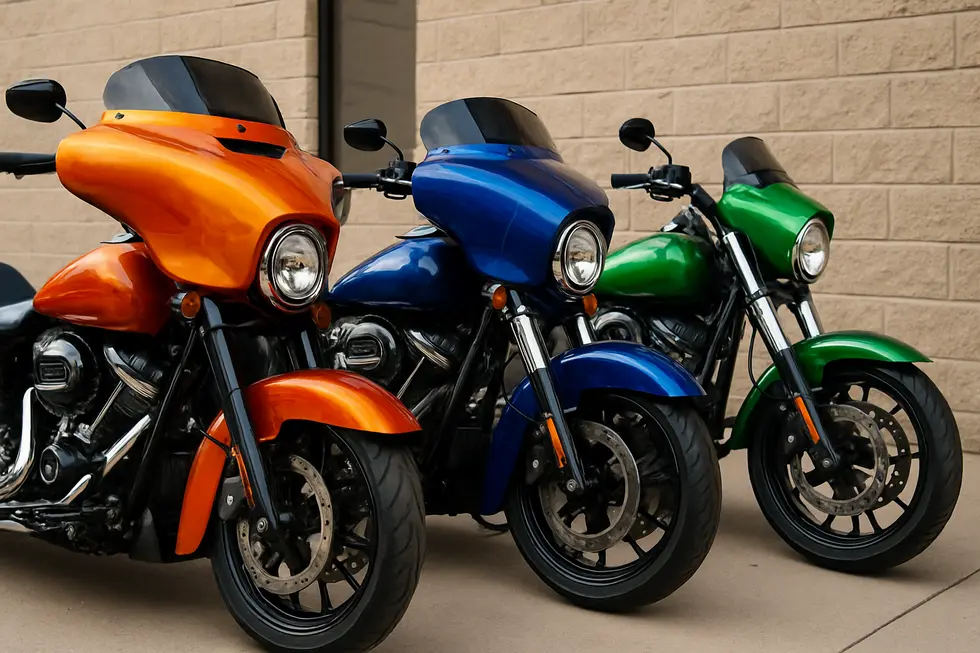
1. Elevating Rider Comfort and Aerodynamics: Functional Styling Innovations in HD Motorcycle Fairings
Harley-Davidson motorcycle fairings have evolved beyond mere stylistic upgrades to become key contributors to rider comfort and aerodynamic efficiency. Through careful design refined by advanced computational fluid dynamics, contemporary fairings significantly reduce drag and helmet turbulence, which not only enhance stability but also diminish rider fatigue during extended journeys. Models featuring optimized shapes, such as contoured fairings with adjustable windshields, exemplify this balance, providing wind protection that can be tailored to various riding conditions and speeds. These developments allow riders to maintain greater control and comfort without sacrificing the classic Harley aesthetic.
Comfort improvements extend to functional accessories seamlessly integrated with fairings. Ergonomically shaped two-up seats redistribute pressure to ease spinal strain for both rider and passenger, while heated grips ensure warmth during colder rides. Adjustable vents incorporated into the fairing’s lower sections enhance airflow management, helping riders adapt to shifting climates without compromising aerodynamic integrity. Supplementary features such as LED auxiliary lighting and quick-release windshields further enhance safety and user convenience, while large, integrated infotainment systems offer connectivity and entertainment during long-distance tours.
Stylistic versatility remains important, as riders balance the aggressive appeal of full fairings with the lighter feel and maneuverability of half or quarter fairings. Vintage-inspired designs maintain classic charm while incorporating modern comfort and safety elements, demonstrating how aesthetic preferences intersect with functional innovation. Additionally, a thriving aftermarket scene offers extensive options for customization—from aerodynamic wind deflectors to color-matched lower fairings and performance seat upgrades—allowing riders to personalize their machines without compromising the engineering benefits.
Together, these styling and functional advances establish modern HD fairings and accessories as indispensable for riders seeking to enhance both their bike’s performance and long-haul comfort. For riders interested in exploring a wide range of fairing options that merge function with style, insightful resources are available at discover affordable motorcycle fairings at Summit Fairings.
Further technical insight into aerodynamic improvements can be found in resources covering aerodynamic trends in models equipped with Sharknose and Batwing fairings.
2. Elevating Harley Appeal: Seamless Customization and Practical Enhancements with HD Fairings and Accessories
Customizing Harley-Davidson motorcycles with fairings and accessories offers a unique way to blend style with enhanced functionality. Fairings not only improve aerodynamics but also serve as a canvas for personal expression and practical upgrades. One popular customization is integrating LED lighting into the fairings. These modern lights elevate the bike’s visual presence while enhancing road visibility, creating a safer and more striking ride. Designed for easy installation, LED fairing lights and trim blends into the contours of many Harley models, preserving the bike’s clean aesthetic without complicated modifications.
Beyond lighting, fairings now often incorporate audio capabilities, delivering immersive sound experiences without sacrificing style. Inner fairing designs with built-in mounts allow for high-performance speaker setups tailored to specific Harley models. This integration ensures that the upgraded audio system complements the bike’s lines and weighs minimally, which is crucial for maintaining optimal handling.
Customization extends to the rear fender, where aftermarket options can dramatically update the bike’s silhouette. Smooth, flowing designs crafted from premium materials not only enhance appearance but also support durability and trimming options, empowering riders to fine-tune the look and feel of their bike. These rear fenders marry function with aggressive styling to complete a cohesive custom profile.
For riders seeking impactful yet straightforward modifications, custom paint jobs and quick-mount accessories such as saddlebags or LED upgrades provide significant aesthetic and functional value. These choices maintain ease of installation while allowing riders to assert individuality.
Such customization options enable Harley enthusiasts to amplify their bike’s personality without compromising performance. For further exploration on motorcycle fairings and their customization potential, the resources available at Explore the Best Motorcycle Fairings at Summit Fairings offer a comprehensive look into styling possibilities.
For detailed inner fairing audio system solutions, refer to the Garage Bagger Stereo Inner Fairing Collection.
3. Seamless Lighting Innovations Elevating HD Motorcycle Fairings for Style and Safety
Modern Harley-Davidson motorcycle fairings have evolved beyond mere aerodynamic shells to become sophisticated platforms that integrate advanced lighting technologies, enhancing both visual appeal and rider safety. LED daytime running lights (DRLs) now commonly feature in fairings, strategically placed around headlight halos, vents, and lower panels to deliver improved daytime visibility while lending a striking custom look. These LEDs not only increase safety on the road but also elevate the motorcycle’s presence through crisp, energy-efficient illumination.
Complementing DRLs, switchback LED turn signals, with their dual white and amber or red functionality, blend seamless signaling with aesthetic fluidity. Their plug-and-play design simplifies installation while maintaining compatibility with Harley’s electrical systems, ensuring signal patterns remain consistent without additional modifications.
Adaptive lighting systems represent the frontier of motorcycle illumination, automatically adjusting beam patterns according to lean angle and road conditions to maximize nighttime visibility. Though more prevalent in competing brands, this technology is influencing Harley-Davidson fairing design and its aftermarket ecosystem, which increasingly offers smart lighting controllable via smartphone apps. Riders gain the ability to tweak colors, brightness, and even run system diagnostics, integrating a new dimension of rider-centric customization.
Aerodynamics and lighting function in harmony, exemplified by fairings engineered to reduce wind buffeting while accommodating integrated LED fog lamps and adjustable vents. This synergy reduces rider fatigue and heightens comfort, proving that smart design marries form and function effectively.
The robust aftermarket offers myriad lighting enhancements—including accent strips and sequenced signal kits—all weatherproof and designed for easy installation. This diversity allows riders to personalize their bikes’ looks and safety features while maintaining factory-fit reliability.
For riders eager to explore these lighting upgrade paths alongside premium fairing options, resources such as the explore the best motorcycle fairings at Summit Fairings provide valuable guidance. Detailed product information and installation support are also accessible via specialized lighting suppliers’ platforms, fostering informed customization that elevates both style and functionality.
4. Seamless Audio Integration: Elevating Style and Rider Experience with HD Motorcycle Fairings
Integrating audio systems directly into Harley-Davidson fairings blends aesthetics and performance to transform riding experiences. These systems are precisely engineered to fit the contours of specific HD models, allowing riders to enjoy concert-quality sound without disrupting the motorcycle’s sleek, factory-like appearance. By housing speakers and amplifiers within the fairing structure, the installation maintains a clean profile while maximizing sound projection.
Audio components used in these integrations are meticulously chosen for durability and clarity. Weather-resistant coaxial and component speakers feature corrosion-resistant materials such as titanium tweeters and neodymium magnets to withstand vibrations, water exposure, and UV rays encountered on roads. Amplifiers designed to handle up to 1,000 watts offer rich mids, deep bass, and crisp highs that cut through wind and engine noise, ensuring audio remains distinct even at high speeds.
Functionality is enhanced with plug-and-play wiring harnesses that mimic OEM fitment, simplifying installation and ensuring long-term reliability. Customization extends beyond sound, as riders can coordinate windshield height and tint along with paint options to harmonize with the bike’s overall style. Stainless steel mounting brackets guarantee secure, corrosion-free attachment.
Beyond just sound, this integration elevates the touring capabilities of Harley-Davidson motorcycles, combining rugged road readiness with refined audio performance. It caters to riders who demand both stylistic authenticity and immersive functionality on open roads. For more insights on custom wheel accessories and installation techniques, explore expert resources on Summit Fairings.
Industry-leading kits illustrate how careful audio integration within HD fairings enhances ride enjoyment while preserving iconic styling, making sound systems a core element of functional customization.
5. Cutting-Edge Aftermarket Innovations Shaping the Future of HD Motorcycle Fairings
The evolution of Harley-Davidson motorcycle fairings in the aftermarket space highlights a unique blend of tradition and innovation. Modern designs focus heavily on aerodynamic efficiency paired with rider comfort, balancing classic HD styling with advanced technology. Recent trends embrace computational fluid dynamics (CFD) to refine airflow, reducing wind resistance and turbulence markedly. This approach leads to fairings that not only improve speed and stability but also enhance long-distance riding comfort.
Lightweight construction has become integral to these innovations. Rather than relying solely on conventional bulky plastics, some custom fairings incorporate machined aluminum sections and stainless steel brackets. These materials reduce overall weight and improve durability without sacrificing the sleek, aggressive styling riders crave. Such minimalist structures offer a more agile feel on the road while maintaining structural integrity.
Lighting integration has also matured, with seamless full LED systems incorporated directly into the fairings. These setups improve visibility and rider safety, merging turn signals and headlamps into aerodynamic shapes that preserve the motorcycle’s silhouette and heritage. This harmony between form and function is a defining characteristic of contemporary HD fairings.
The culture of customization drives much of today’s aftermarket evolution. Riders seek personalized elements—custom paint finishes, 3D printed accents, and ergonomic adjustments—without needing to dismantle the entire bike. These bolt-on enhancements allow owners to express individuality while benefiting from performance-based improvements such as upgraded suspension and optimized exhaust systems.
Together, these developments reflect a vibrant community focused on pushing the boundaries of styling and utility. They ensure HD motorcycle fairings remain at the cutting edge of motorcycle fashion and engineering. For riders interested in exploring a broad selection of options, the Summit Fairings blog offers an extensive resource showcasing these emerging trends.
For deeper insights into aerodynamic breakthroughs and advanced lighting integration transforming HD models, see detailed coverage of recent innovations, including the acclaimed sharknose fairing redesign that exemplifies the future of fairing technology.
Final thoughts
HD motorcycle fairings serve as a critical intersection of technology, practicality, and style for Harley-Davidson motorcycles. For business owners, mastering the intricacies of materials and aerodynamic design, coupled with streamlined installation processes and expansive customization options, unlocks a competitive advantage in the aftermarket landscape. By championing both the functional benefits and the personalized aesthetic potential of fairings, businesses can elevate their product offerings and satisfy the sophisticated demands of Harley enthusiasts. This strategic approach not only increases sales but also fosters brand loyalty by delivering enhanced riding experiences through precision-engineered fairings and accompanying accessories.
Ready to elevate your ride? Summit Fairings delivers premium, custom-fit fairings that blend style and durability. Whether you’re chasing speed or turning heads, we’ve got your bike covered. Don’t wait—transform your machine today. Click, customize, and ride with confidence. Your perfect fairing is just a few clicks away. Act now!
About us
We are one of the leading motorcycle fairing export sites, with over 3,000 styles across almost all motorcycle models. Buy from summitfairings.com, and pay 10-40% less than the prices on other sites. If you have any questions, we promise we will have your answer within six hours.
RELATED POSTS
View all

